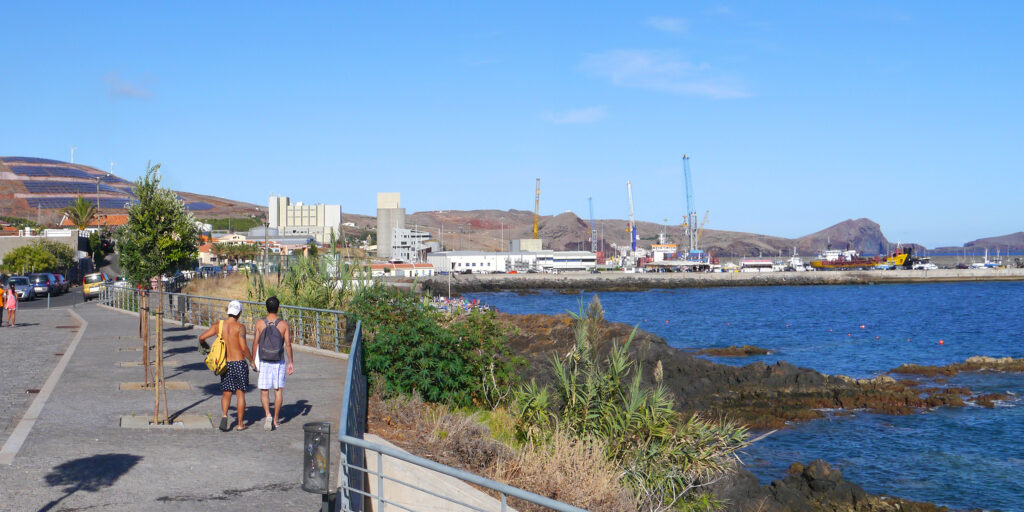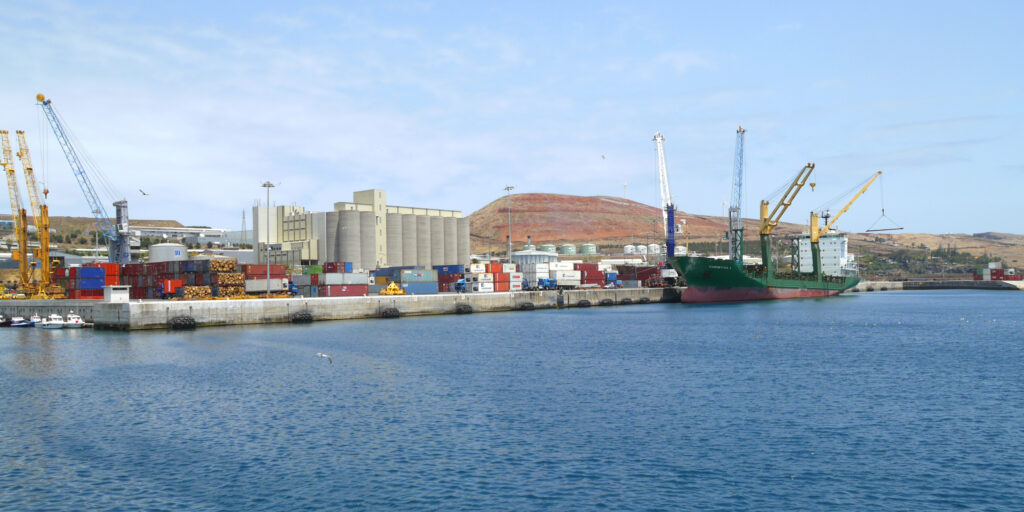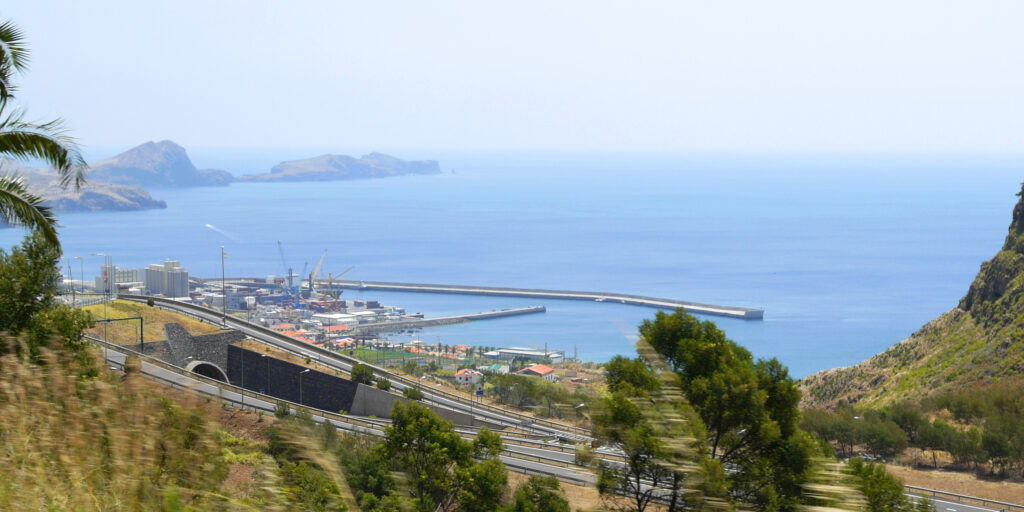
Caniçal – Madeira’s Gateway to the World!
Caniçal is a former fishing village at the eastern end of Madeira. Its name derives from the Portuguese word caniço, meaning „reed“ or „cane.“ This reflects a common trend in Portuguese place names, which often reference local vegetation or geographical features. The village is famous for its seafood and natural sandy beach. But also as the gateway to the breathtaking Ponta de São Lourenço hike.
Caniçal’s History and Development
Caniçal was first mentioned in September 1489 as a small settlement at Madeira’s eastern tip. It was officially recognized as a parish in 1561, with the newly built Capela de São Sebastião serving as its religious center. However, the chapel was looted by corsairs in 1594. After being rebuilt, it was destroyed by the devastating earthquake of 1748. From the 18th century onward, settlement shifted westward. Due to persistent pirate attacks, a harbor with military installations was constructed in the 1750s.
In 1870, the Farol da Ponta de São Lourenço lighthouse was established to ensure safe navigation along the treacherous rocky coastline. This measure became essential after the Forerunner shipwreck in October 1854.
Economic growth began in 1942 when the whaling company Empresa Baleeira do Arquipélago da Madeira set up operations in Caniçal. The construction of a road tunnel in the 1960s ended the village’s relative isolation, and in 1994, Caniçal was officially designated a Vila (small town).
Economic Significance
Caniçal’s economy has been shaped primarily by its container port and free trade zone. This low-tax area, approved by the EU (though with some restrictions), was designed to compensate for Madeira’s peripheral location within Europe. Various companies have established operations here, including Alvedama (which produces aloe vera cosmetics) and Insular (a manufacturer of pasta and baked goods).
Additionally, Caniçal hosts innovative companies in biotechnology (madebiotech.com) and telecommunications (Eutelsat, one of the world’s largest satellite operators). Small wind farms also contribute to the area’s energy supply.

Caniçal’s Traditions
Caniçal has a strong religious tradition. Every third weekend in September, the grand festival in honor of Nossa Senhora da Piedade (Our Lady of Mercy) takes place. The main highlight is a spectacular procession that extends out to sea.
The Nossa Senhora da Piedade chapel, perched on Pico da Piedade (also known as Monte Gordo), is believed to date back to the 16th century. According to legend, it was built as a vow by sailors who survived a shipwreck near the coast. To this day, a yearly procession carries the revered statue uphill to the chapel before transporting it to the beach, where it is then placed on elaborately decorated fishing boats for a ceremonial journey at sea. It is later returned in another solemn procession.
Here are two videos that illustrate the spectacle:
Whaling Heritage
Until 1981, Caniçal was a whaling town. Today, the Museu da Baleia (Whale Museum) offers a glimpse into this chapter of history. Multimedia presentations and life-sized models of whales and dolphins make for an immersive experience. The museum not only covers the history of whaling in Madeira but also educates visitors on marine mammals in their natural habitat. Interestingly, parts of the 1956 film Moby Dick, starring Gregory Peck, were filmed here, adding a cinematic connection to Caniçal’s maritime past.
Beaches and Swimming Areas
Caniçal offers three well-known beaches, each with its own charm. On the western side, Praia da Ribeira de Natal is a pebble beach renowned for its crystal-clear waters, frequently awarded for cleanliness. In the center, Praia do Calhau is a smaller pebble beach adjacent to the Complexo Balnear. To the east, near Ponta de São Lourenço, lies the small but beautiful Prainha, an ideal spot for a refreshing swim.
Complexo Balnear (Seawater Pool Complex)
At the rocky shoreline, where traditional fishing boats still rest, a modern swimming complex has been built. It features two pools with panoramic ocean views and direct sea access via two stairways. Changing rooms, sun loungers, and umbrellas ensure a comfortable visit. After a swim, you can relax at the beachside bar with a refreshing drink and soak in the serene atmosphere.
Prainha Beach
Toward the eastern cape lies the popular Prainha beach, which boasts fine, dark volcanic sand. It’s a perfect place to unwind while enjoying the view from the beachside bar.
Nearby, you’ll find the Dunas da Piedade (Piedade Dunes), a fascinating geological site. These fossilized rock formations contain remnants of seashells, calcareous algae, and sea urchin spines, attracting geologists and nature enthusiasts alike.
From the parking area along the road to Ponta de São Lourenço, a 300-meter descent leads to the protected cove of Prainha, nestled beneath the Miradouro da Prainha viewpoint. The beach offers all the necessary amenities for a relaxing day by the ocean.
Eastern Cape: Ponta de São Lourenço
Caniçal serves as the perfect starting point for hikes to Ponta de São Lourenço, Madeira’s easternmost peninsula. This unique landscape is famous for its diverse wildlife and breathtaking viewpoints. The well-trodden hiking trail takes you nearly to the island’s eastern tip, where nature’s raw power meets an atmosphere of serene isolation.

Conclusion
Caniçal is a testament to Madeira’s seamless blend of history, nature, and modernity. It retains the charm of a former fishing village while embracing the economic growth of its free trade zone. Tradition and innovation coexist harmoniously, making Caniçal a multifaceted destination. From its dramatic coastline and rich whaling heritage to its vibrant cultural festivities, the town offers a distinctive and memorable experience. Whether you’re relaxing on its beaches, hiking along stunning coastal trails, or diving into its history, Caniçal captivates visitors with its authentic character. This dynamic balance between tradition and progress makes Caniçal a true gem of Madeira.
Caniçal can be reached by bus from Funchal.
You get on the CAM line 113 at Avenida do Mar and arrive in the centre of the village after an interesting journey.
The 113 often continues to Baía D’Abra (starting point of the Ponta de São Lourenço hike)
Looking for more stress-free adventures on Madeira?
“Madeira by Bus” is your ultimate travel companion, featuring detailed bus schedules, insider tips, and must-visit destinations across the island. Whether you’re a first-time visitor or a seasoned explorer, this guide makes it easy to plan your journey.
👉 Get your copy today at www.madeira-by-bus.com/read and start exploring Madeira the eco-friendly way!


